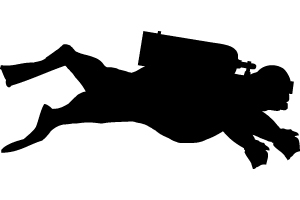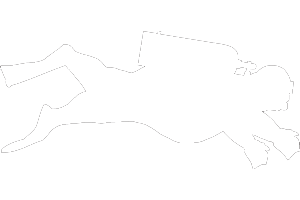Nig
On the canyon wall, just across from the escalator leading to the Visitor Center at Hoover Dam, is a plaque dedicated to a dog.
Puzzled visitors often ask the guides and guards why the plaque is there. The answers to these questions help keep alive the saga of the first and only Hoover Dam mascot, Nig.
Details of the mascot’s birth are a bit obscure, but Morgan Sweeney and LeGrande (Blackie) Hardy agreed that he was born under the Six Companies No. 4 barracks, and they should know. Mr. Sweeney was with the commissariat during construction and Mr. Hardy drove one of the huge transports that hauled the workers from Boulder City to the dam site. After construction of the dam, Mr. Hardy worked as a guide at Hoover Dam.
The dog’s rough black puppy fur did not smooth out entirely as he matured and he never quite grew up to his outsized paws, but perhaps these odd characteristics helped to endear him to the workers. He was hardly weaned when Mr. Hardy picked him up one morning and tossed him on the transport. When the dog first saw the dam, he knew that was where he belonged. It became his life. The only life he ever knew or wanted. Every morning he boarded a transport and put in a full days work along with the other workers.
He inspected everything daily. As the dam rose higher and higher he had to ride the skips, a type of open-air elevator, to cover the ground. When he wanted to board a skip, he barked, and the operators always stopped for him. The mascot would hop aboard and bark again at the level where he wished to get off.
Trainers will tell you that one of the most difficult tricks to teach an animal is to get them to walk on any swaying, unstable surface, but Hoover Dam’s mascot raced happily back and forth across the swinging catwalks slung across the canyon seven hundred feet above the Colorado River.
The Hoover Dam mascot was not a one-man dog. He had no master. He belonged to the dam and everyone connected with it, and they all belonged to him! If he decided to work overtime at his favorite job of chasing ring-tailed cats that infested the tunnels, he hitched a ride back to town in the first Bureau of Reclamation or Six Companies car, truck or transport that happened along. No one ever remembers him accepting a ride from anyone not connected with the dam. How he could differentiate between dam workers and casual visitors no one could figure out, but it is a known fact that he did.
Everyone wanted to feed the dog, and being a dog, he found it hard to refuse. He became quite sick. The worried workers then decided that the dog needed supervised feeding. Arrangements were made with the commissary for the dog to be fed and word was passed to all workers not to offer him any more food.
The commissary packed a lunch for him every day and he soon learned to carry it in his mouth when he boarded the transport. At the construction site, he placed the sack alongside the workers’ lunch pails and went about his business. When the whistle blew, the dog raced for his sack and sat patiently until someone opened it for him.
Workers leaving the job frequently stopped at the commissary and left a few dollars with the manager – “Just to see that the dog gets fed well.” These contributions soon grew to a respectable sum and a bank account was opened for the Hoover Dam mascot.
The money paid for his food, dog license, and some sleeping baskets (which he never used) and silver collars that he detested. Sometimes these collars were stolen by souvenir hunting tourists.
The fund also paid for advertisements in the Boulder City and Las Vegas papers, such as this one.
I Love Candy But It Makes Me Sick.
It Is Also Bad For My Coat.
Please Don’t Feed Me Any More.
Your Friend, The Hoover Dam Mascot
One evening, Chief Ranger Peterson was notified that a group of workers was beating a man to death. Chief Peterson dashed to the scene and broke it up. When he learned the cause of the riot, the Chief told the victim he would like to see the job finished but it was his duty to stop it. The Chief escorted the bloody and bruised man to the town limits and told him never to come back. The man had made the near-fatal mistake of kicking the Hoover Dam mascot.
After the dam was completed, the dog took it upon himself to see that the rule “NO DOGS ALLOWED LOOSE ON DAM” was rigidly enforced. His ironclad insistence on the letter of the law caused some embarrassment to members of the Guide Force, but these skilled diplomats always managed to convince indignant pooch owners that the mascot actually owned the dam. The Bureau of Reclamation merely built and operated it for him.
On a day when the blazing desert sun, combined with a blast furnace wind, pushed the thermometer over the 120-degree mark, the dog found a spot of shade under a truck. The driver never noticed the sleeping dog when he started up and drove off.
News of the fatal accident was phoned to town and it was the quietest afternoon Boulder City ever experienced. Later, rough, tough, hard-rock men wept openly and unashamed as they slammed their ear-shattering jackhammers into the hard rock cliff, carving out the grave which was to be the Hoover Dam mascot’s tomb.
So, in death as in life, the Hoover Dam mascot looks upon the dam he loved for as long as it will stand and when the wind howls around the towers of the dam, the old-timers smile knowingly. It isn’t wind. It’s the dog baying at the ring-tailed cats.

